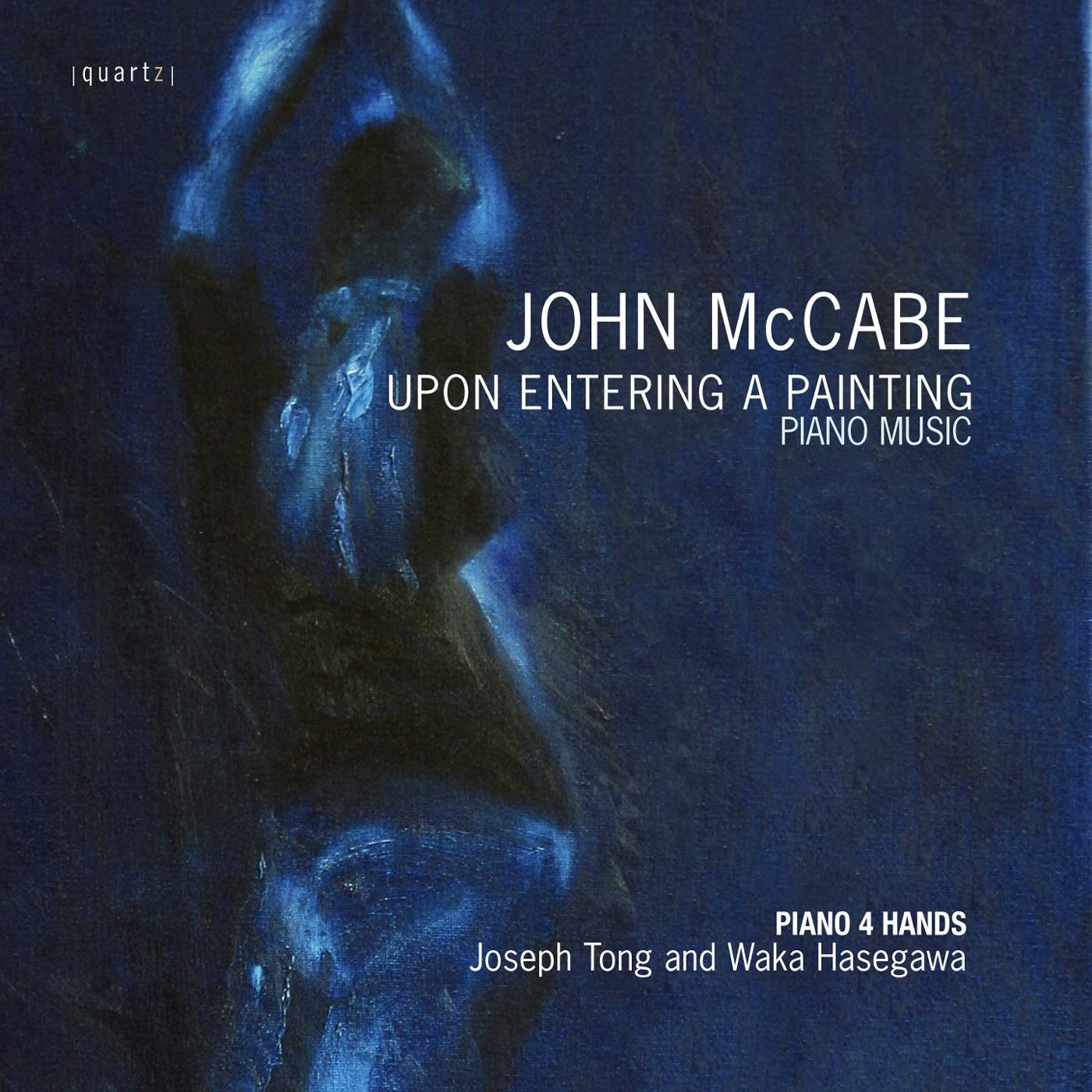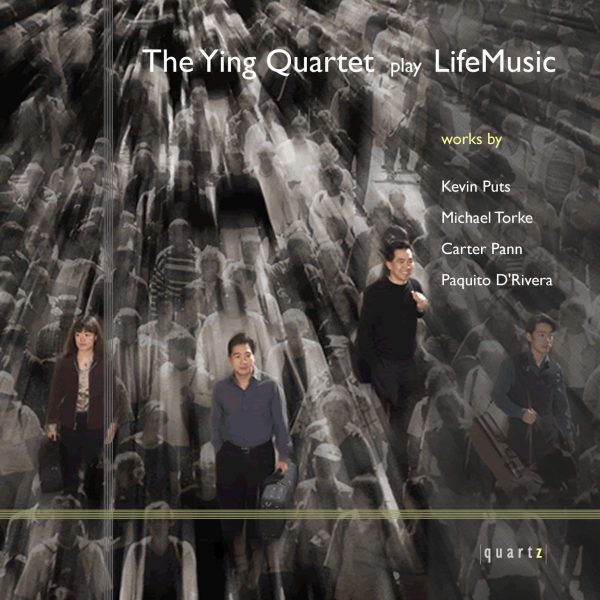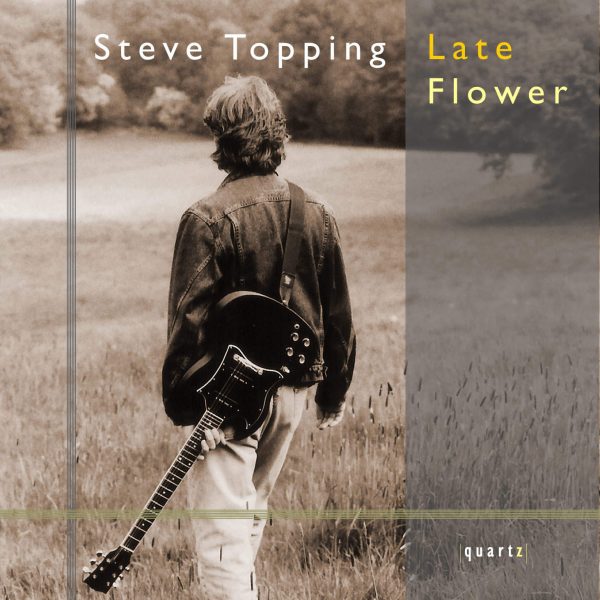Upon Entering a Painting
Price range: £5.99 through £11.99
Joseph Tong & Waka Hasegawa
Upon Entering a Painting
Two Scenes from Edward II
(i) The French Court
(ii) The Barons
Basse Danse
Gaudi (Study No 3)
Sonata (Study No 12)
About This Recording
It is perhaps surprising, in view of quite a long career as a pianist, that it took me some time to find myself comfortable writing for my own instrument – writing for orchestra was never a problem, but the piano was much more difficult, for some reason. Perhaps I was too close to it. It wasn’t until 1963, with a set of Variations, that I began to feel at ease with writing for the instrument. Since then, it has gradually assumed an important part of my compositional activity, and the works I have written reflect not only the inspiration I have received from visual impressions (such as landscapes, works of art, or buildings) but also the stimulus afforded by other musics, both non-Western and very specifically Western – the series of homages to composers whose music fascinates me (particularly the Studies from No.7 onwards) typify this last aspect of my output. I have been extremely fortunate in that other pianists, instead of ignoring my work, on the grounds of “Well, he can play that himself if he wants to”, have been generous enough to play some of the music, and to play it brilliantly – Joseph Tong and Waka Hasegawa perfectly exemplify this musical friendship.
John McCabe, 2011
Upon entering a painting for Piano, Four Hands (2008/09)
Upon entering a painting, written in 2008/09, was commissioned, with funding from the Britten-Pears Foundation and the Ralph Vaughan Williams Trust, by Piano 4 Hands (Joseph Tong and Waka Hasegawa), to whom it is dedicated. The inspiration of the piece was the kind of painting which, as you gaze at it, seems to draw the onlooker into the frame, indeed into the very paint itself. The specific trigger for the idea of the piece was the Rothko Exhibition at Tate Modern in 2008 – Rothko has long been a favourite painter of mine, even though his creative world is very different from my own. However, there were one or two paintings in the exhibition in which I felt strongly this sense of being drawn into the inner life of the painting, especially when I was able to incur the wrath of the curators and step close to the paintings and examine the surface in detail. The opening and closing sections of the piece, with their gradual thickening of the harmonies and (at the end) equally gradual thinning, reflect this sense of stepping forward into and backward out of the works. The inner life of the faster sections, while apparently very un-Rothko like, reflects the extraordinary, teeming inner life of the brush-strokes.
Two Scenes from Edward II for Two Pianos (1995)
The French CourtThe Barons
These two pieces are taken from the score Edward II, the full-length ballet with choreography by David Bintley commissioned by the Stuttgart Ballet and written in 1994/5. The ballet’s first performance took place in Stuttgart in April 1995, and this two-piano version of two scenes from it was written the same year, to a commission from the Port Fairy Festival in Australia. It is dedicated to Len Vorster, with whom the composer gave the première at the Festival in October 1995. The ballet’s origins are in the play by Christopher Marlowe, and the two scenes rewritten for two pianos, and played without a real break, are contrasted in mood. The first, from Act Two, is a set of dances performed at the French Court, somewhat pastiche in style and one of the few lighter moments of the score. This is followed by a reminder of the essential darkness of the work, and its portrayal of the lust for power, in the scene from Act One in which the Barons opposed to Edward unite to express their anger at his behaviour and their determination to dominate and (ultimately) to overthrow him.
Basse Danse for two pianos (1970)
Basse Danse was commissioned by University College, Cardiff, and is dedicated to Ian Bruce, with whom I gave the first performance in January 1971. The basic idea came from the renaissance dance type, which had as its basis a two-part form, one part slow and the other quick – it was often the case that the second part was a quicker version (sometimes simply at double speed) of the first. These ideas became somewhat changed in my piece, but the relationships between the various sections are of a similar kind, with the basic pulse remaining the same throughout the work. After a short, quick introduction, there is a slow section (containing a kind of scherzo-like middle part) and a final quick “movement”, closing with a return to the opening introduction. It might be added that although the work was commissioned and written for two pianos, once I started composing it I found myself increasingly determined to make an orchestral version of it, which was done in 1973. I hope that I have reflected in this music both the dance element and a certain degree of forthrightness characteristic of the Middle Ages.
Gaudí (Study No.3) (1970)
This work is the third in a series of piano pieces subtitled “Study” because, although individual concert works in their own right, they all include as part of their basic concept an exploration of some aspects of piano technique or compositional procedure. The various pieces in this sequence have widely differing durations – Gaudí lasts nearly a quarter of an hour. It is, formally, a large-scale rondo, in which the structure is built up by using various contrasted themes and groups of motifs, which are somewhat varied on each reappearance. This particular work was commissioned by the 1970 Cardiff Festival of Twentieth Century Music, with funds provided by the Welsh Arts Council, and is dedicated to Valerie Tryon, who gave the first performance. The music is a tribute to the work of the Spanish architect Antonio Gaudí, whose extraordinary and unique buildings are a source of continual fascination. Before setting about the composition of this music I made some notes to emphasize the particular qualities of this architecture that I wanted to recreate in musical terms: “Bells/deep gong sounds; contrasts of decoration with static sculptural forms; intricate, ornate ornamentation; variety of planes, textures and materials; juxtaposition of the ferocious and the idyllic.”
Sonata (Homage to Tippett – Study No.12) (2009)
Sonata was commissioned by the BBC for their series of Proms Chamber Music Concerts featuring New Generation Artists, and first performed at the Cadogan Hall, London, by Ashley Wass on 31st August 2009. The series of concert pieces (ranging from 5 to 16 minutes) that I have called Studies started with the intention of exploring either pianistic or compositional topics, but has since No.7, a homage to Dukas, also reflected my love of the music of various composers. Tippett’s piano music, some of which I have played many times, has always fascinated me for its examination of an enormous range of keyboard sonorities and techniques, and for its lyrical poetry and the energy and dynamism so typical of its composer. In this study, I have combined my tribute to him (during which I refer to two of his works) with an exploration of sonata form – for many years I resisted the idea of writing a Piano Sonata (note the capital letters), thinking sonata form itself was not for me, but I suddenly felt I could write a single-movement work, thinking of the examples of Hoddinott, Scriabin and Tippett himself, which would impinge closely on sonata form. Thus, the opening vigorous section recurs as a kind of recapitulation to close the work, and between those two parts is a slow “movement”, and then a lightly scored scherzo. The actual ending itself vanishes into the distance in a little phrase which gets quicker and quieter until it is hardly heard.
Booklet notes © Copyright 2011 by John McCabe
Track Listing
-
John McCabe
- Upon Entering a Painting
- Two Scenes from Edward II (i) The French Court
- Two Scenes from Edward II (ii) The Barons
- Basse Danse
- Gaudi (Study No 3)
- Sonata (Study No 12)




